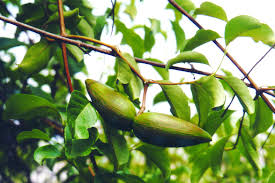Can there be one solution for preventing heart attacks, measuring soil moisture and detecting explosives?
All these may sound disjointed, random problems, but scientists say it is possible to address them using the same concept or technology platform. Researchers at Indian Institute of Technology, Delhi, have achieved this.
The solutions are all based on a technology platform that can detect a chemical binding between a source molecule and a target molecule in a device with very high sensitivity, and integrating them with highly sensitive mechanical and electronic transduction in nano devices.
Heart attack occurs because blood flow to the heart gets blocked for some reason or other and cardiac muscles starts dying. If this can be diagnosed early on, the patient can be saved. The standard procedure is to conduct ECG when a patient complains of chest pain. Treatment is started immediately if the test shows abnormalities. But, many times abnormalities do not show up in ECG report. In such cases, doctors have to conduct blood tests.
The test works by detecting biomarkers for myocardial infarction in a blood sample. Stress generated when cardiac muscle start to die induces production of proteins like troponin and myoglobin. These biomarkers appear in blood samples. The device detects these. It is a nano mechanical platform that integrates chemistry with mechanics and electronics.
Prof V Ramgopal Rao
" Such technologies are available in the international market. But they are unaffordable and bewildering to mostly uneducated Indian farmer"
High technology is one thing, being handy and practical is another. The devices have been available for some years now. However, there is a need to make them more affordable for the poor and also make them easier to operate. A team of researchers led by the Director of IIT, Delhi, Ramgopal Rao, have achieved this.
Speaking to India Science Wire, he noted, “When we set out our framework for development of the sensor we told ourselves: we should be able to detect the markers within ten minutes, the cost of test should be affordable and it should not require a super specialist to administer, any doctor even at a primary heath care center should be able to use it. Only then it would be socially relevant and practical. We are thrilled that we have been able to achieve this.”
As regards the soil moisture sensor, he said, the technology was presently being field tested in farm condition. “Such technologies are available in the international market. But they are unaffordable and bewildering to mostly uneducated Indian farmer. We need technologies that are affordable and easily operable by Indian farmers. If they cost Rs.10,000 in international market, we need them at Rs.100. There is no short cut to developing technologies on our own”.
On the device for detecting explosives, he said it was also in the final stages of technology development.
Prof V Ramgopal Rao is a well-known nanotechnologist. He was earlier chief investigator for the Centre of Excellence in Nano Electronics project at IIT-Bombay, where he played a key role in establishing a startup called NanoSniff Technologies Pvt Ltd.
Born in a small town Kollapur in Telangana, he did his bachelors from the Kakatiya University in technology. He completed M Tech from IIT-Bombay and doctorate from Munich in Germany. He started his career in nano electronics and for a long time his research work was on complementary metal oxide semiconductors.
Prof Rao has over 400 publications in the area of electronic devices and nanoelectronics in international journals. He is a recipient of many awards including the Shanti Swarup Bhatnagar prize, Infosys Prize and Prof C.N.R. Rao National Nanoscience Award. He holds 32 patents including 13 US patents. Many of them have been put into use for commercial purposes.
Among other things, he has had a stint at chipmaker Intel. There his work mainly focused on extending the life of batteries used in mobile phones. Many of his inventions form part of the microprocessors produced by the company. (India Science Wire)


